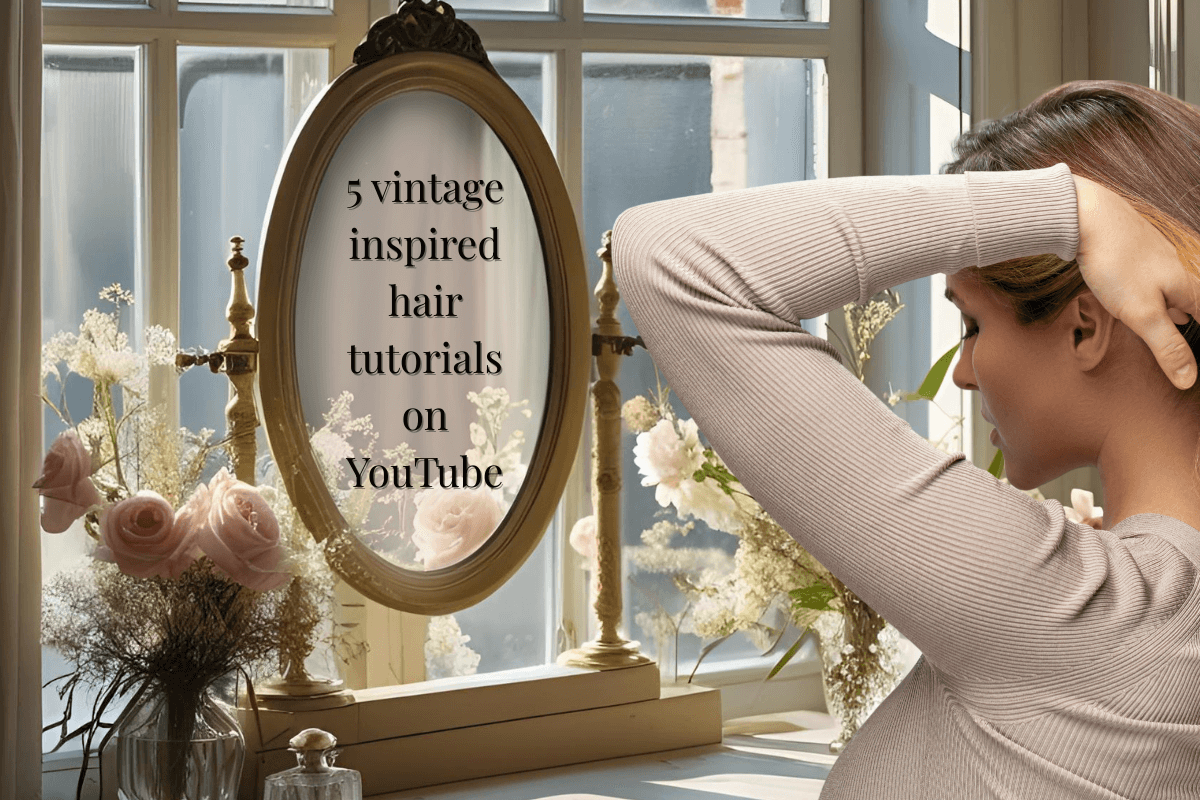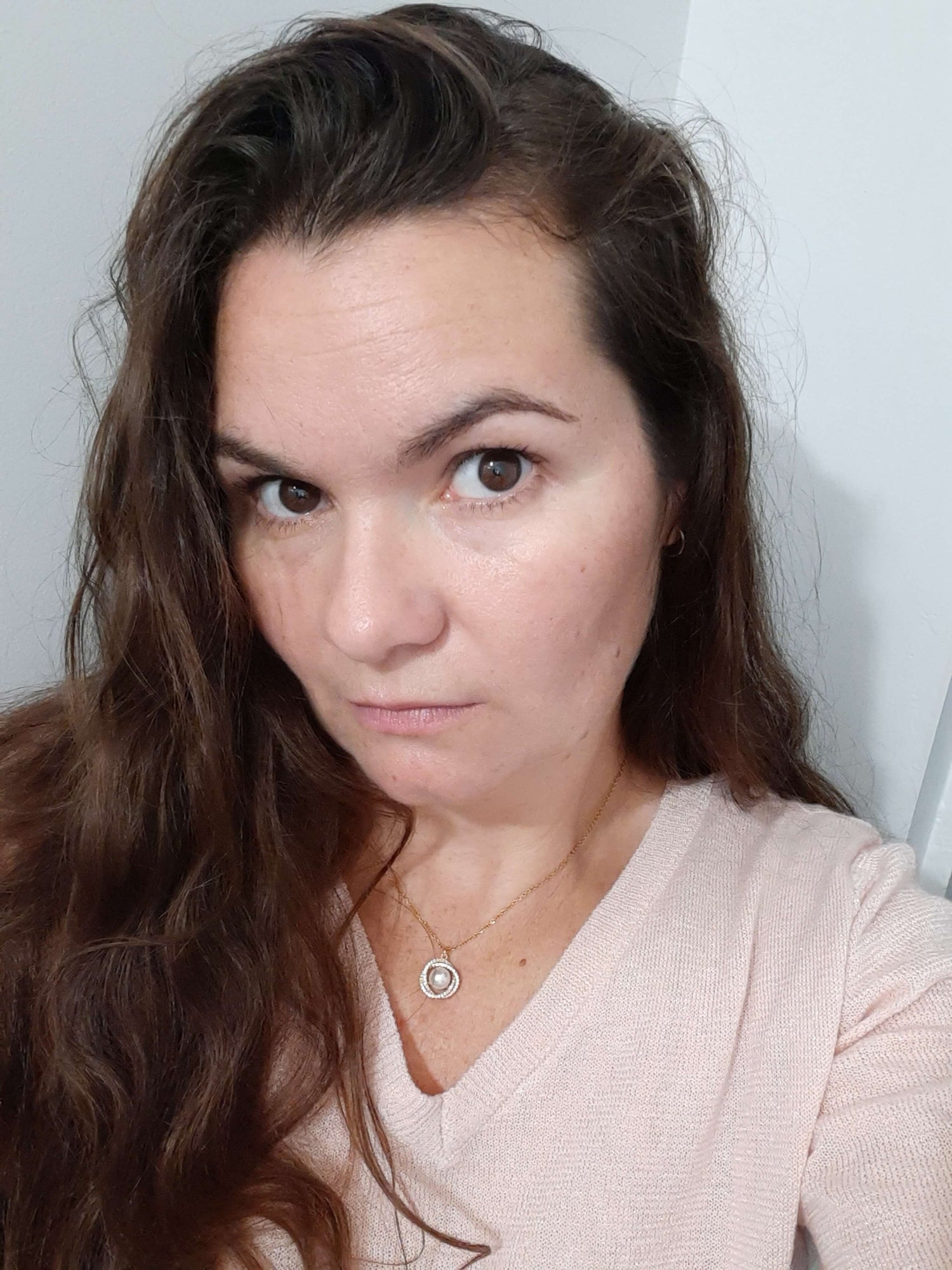
Vintage millinery inspired pieces are so beautiful and so I felt inspired to collate some YouTube tutorials so we can be inspired together. Thes 5 videos should give you plenty of inspiration, however this could of easily been more than 5 video, but for now, jump in with me with these 5 and we'll do some learning together.
During the late teenage years and early 1920s, Silent Movie stars and bathing beauties embraced long, curly hair as a fashionable trend. Actresses like Lillian Gish, Mary Crawford, and Maude Feely took turns flaunting their long ringlet curls. Sometimes, these curls were gathered into a loose arrangement pinned to the head, while other times they were worn half up and half down, accompanied by a headscarf, or left down but swept away from the eyes. Long hair fell out of fashion by 1922, but the trend of all-over curls persisted.
Initially, the trend toward shorter hair did not involve cutting, but rather involved restyling long locks into short bobs. Long hair was skillfully arranged around the neck's base, or pulled into a bun or chignon at the back, with the sides featuring either curls or neat waves. The bun or cottage loaf hairstyle had been worn by the working class for centuries, but the 1920s introduced some variations, such as a flatter style closer to the head or a rolled-under look for smoother appearance. The challenge arose when all that long hair needed to fit under increasingly tight-fitting hats.
The bob hairstyle eventually became one of the most iconic looks of the 1920s. However, it is often overlooked that the era did not immediately begin with the bob. Many women initially pinned their hair back to create a faux bob look, and only later in the era, when it became more socially acceptable, did they actually cut their hair shorter. The adoption of the bob style was more controversial than simply following a new fashion trend, particularly among older generations.
Brittany Sarah has a great tutorial on creating A Gatsby style Faux bob.
Hairstyles in the 1940s were diverse and not strictly dictated by fashion trends. Women had the freedom to choose short, long, or mid-length hair based on their personal preferences and hair type. Regardless of the chosen style, femininity was emphasized, with hair kept soft and away from the face (except for fringes). Partings were typically to one side, although occasional center partings can be seen in old photographs.
Older women often continued to wear short waved styles from the 1930s, as it was familiar to them. Alternatively, they might opt for one of the shorter and easier-to-maintain styles popular during that era.
Waves were soft and lacked the crispness of the waves seen in the 1920s and 1930s. Curls were used for embellishment, placed on the opposite side of a roll or piled on the crown for updos. Hair was always set, even for smooth hairstyles, as completely straight hair was not fashionable in the 1940s. Setting the hair also provided the necessary lift and movement for the desired hairstyles.
Autumn Breeze has a gorgeous retro video.
During the World War II era, a multitude of large curl variations emerged, leading to a diverse range of hairstyles rather than a singular fashion. However, what united these styles was the distinctive presence of a "V" shape formed by the curls on the sides of the head, occasionally inverted. Another variant involved incorporating a "V" shape in the hair parting at the crown. An intriguing theme during this period was the prevalent use of three dots and dashes alongside the "V," commonly found on gloves, handkerchiefs, and other accessories. Notably, one particular hairstyle variation boasted three small curls representing the "dots" and a longer curl as the "dash," with the bottom of the "V" originating from the nape of the neck and extending along each side of the head up to the temples.
To achieve the iconic victory roll appearance, women utilized a combination of techniques, including the application of hairspray, backcombing, rolling, pinning, and curling. These methods enabled the rolls to be positioned either atop the head or framing the face. Women with narrower faces often opted to style their hair in front of their ears, creating a broader visual effect. Those with greater financial means were more likely to visit the salon on a daily basis to achieve a polished and lustrous look. In contrast, women from lower socioeconomic backgrounds had to undertake their own hairstyling endeavors. Additionally, some women chose to purchase wigs as a convenient alternative to daily hair styling.
Hair Angels has a very informative video on Victory Rolls.
In the 1940s, hair was styled away from the face. If a woman had a fringe, it was either incorporated into the hairstyle, pinned to the side, or made into a distinctive feature. Hair was never left hanging flat on the face; it always had shape and purpose.
For example, a fringe could be styled with an S-shaped wave and positioned to one side. Alternatively, it could be a cluster of curls sitting high and slightly forward on the face, similar to Betty Grable's iconic look. There was also the option of a full-forward roll on the forehead, sleek and smooth like a barrel.
Jackie Wyers has a few vintage inspired videos but this one about Allie Hamilton's look in the movie The Notebook, set in the 1940's is really pretty.
Those with disposable income would have their hair set or permed at a salon. However, most women set their hair at home using pin curls, barrel curls, or rag twisting. Hair could be left overnight in pin curls or covered with a scarf or snood while at work, ready to be styled in the morning or for social events.
Rolls were a defining characteristic of 1940s hairstyles and offered versatility. Women could shape and position the rolls as desired, whether on the top, sides, forehead, or around the nape. They could be symmetrical on both sides of the face or asymmetrical. Additionally, hair could be brushed smooth or styled with waves. Backcombing or the use of rats helped create the desired shape and stability, while hairpins kept everything in place.
I had to throw Dollhouse 'Do in here for all the short hair girls.
In conclusion, the late teenage years and early 1920s saw the rise of long, curly hair as a fashionable trend among Silent Movie stars and bathing beauties. While long hair eventually went out of fashion, the trend of all-over curls continued. The transition to shorter hair initially involved restyling long locks into short bobs, with various arrangements and styles. The bob hairstyle eventually became iconic, but its adoption was met with controversy, particularly among older generations.
Moving into the 1940s, hairstyles became diverse and were not strictly dictated by fashion trends. Women had the freedom to choose short, long, or mid-length hair based on their personal preferences and hair type, with a focus on emphasizing femininity. Waves and curls were used for embellishment, with soft waves replacing the crispness seen in the earlier decades. Hair was always set to achieve the desired lift and movement, even in smooth hairstyles.
Vintage millinery pieces inspired by this era add a beautiful touch to overall styling, complementing vintage-inspired clothing and hairstyles. Exploring YouTube tutorials can provide a wealth of inspiration for recreating these vintage looks. While the presented five videos offer a great starting point, there are numerous resources available for further learning and inspiration.
So, let's embark on this journey together, exploring the beauty and elegance of vintage millinery and hairstyles, and enjoy the process of learning and recreating these timeless looks.

About the Author
Melissa Rath is an Australian milliner creating unique, handcrafted hats. She shares insights on design, styling, colour theory, the history of hats and all things millinery.

